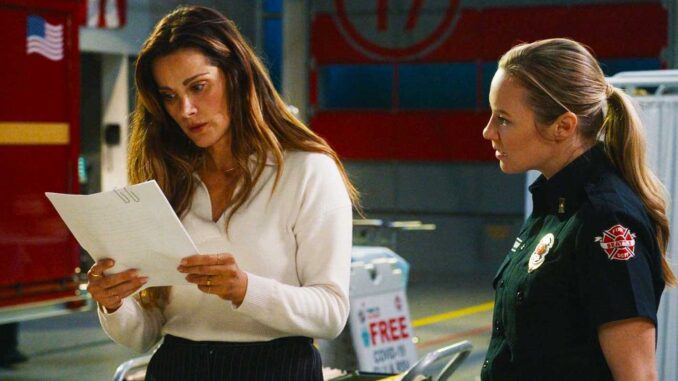
From Engine to Oasis: How Station 19 Transformed a Fire Truck into the Ultimate Mobile Unit
Station 19, the fictional Seattle firehouse, is no stranger to pushing boundaries. Beyond battling flames and saving lives, they’re known for their unconventional tactics and unwavering dedication to their community. It’s this spirit that led them to embark on a project far beyond the call of duty: transforming a decommissioned fire truck into a state-of-the-art mobile unit, a rolling haven designed to address the multifaceted needs of the city’s most vulnerable populations. This wasn't just about modifying a vehicle; it was about redefining the role of firefighters as first responders, extending their reach beyond emergency scenes to encompass proactive community care.
The initial spark for this ambitious project came from a series of frustrating encounters. The team, particularly Captain Sullivan and Maya Bishop, repeatedly witnessed situations where immediate medical assistance wasn't enough. They saw the devastating effects of homelessness, the crippling impact of addiction, and the overwhelming lack of access to basic resources. Responding to overdoses only to release individuals back onto the streets, or rescuing families from burning buildings only to leave them displaced, felt like treating symptoms without addressing the root cause. It was this recurring cycle of reactive firefighting that ignited the desire for a more proactive, preventative approach.
The chosen firetruck, a sturdy veteran of countless rescues, became more than just a chassis. It was a blank canvas, a symbol of hope, and a testament to the team's unwavering commitment. The transformation was a meticulous process, a collaborative effort involving everyone at Station 19. Andy Herrera, with her pragmatic leadership, spearheaded the logistical challenges, securing permits, and navigating the bureaucratic maze. Jack Gibson, with his mechanical ingenuity and unwavering optimism, became the driving force behind the physical modifications. His expertise transformed the engine compartment into a compact medical bay, complete with a defibrillator, oxygen tanks, and basic diagnostic equipment.
The interior underwent a dramatic metamorphosis. The bulky hoses and firefighting gear were replaced with modular compartments designed to hold a diverse range of resources. One section became a miniature clinic, equipped for basic health screenings, vaccinations, and wound care. Another housed essential supplies for the homeless population: warm blankets, clean clothes, hygiene kits, and non-perishable food. A third area was dedicated to providing information and resources for those struggling with addiction, offering pamphlets on rehabilitation centers, support groups, and harm reduction strategies.
But the transformation went beyond simply equipping the truck with supplies. The heart of the mobile unit lay in its potential for human connection. The team recognized the importance of creating a safe and welcoming space where individuals felt seen, heard, and valued. The vehicle was equipped with comfortable seating, soft lighting, and even a small coffee station. It was designed to be a mobile oasis, a place where individuals could escape the harsh realities of their daily lives and connect with compassionate professionals who genuinely cared about their well-being.
The impact of the mobile unit was immediate and profound. It allowed Station 19 to address urgent medical needs in underserved communities, reaching individuals who were often excluded from traditional healthcare systems. It provided a lifeline for the homeless, offering a safe and dignified space to access essential resources. And it empowered individuals struggling with addiction, providing them with information and support that could potentially save their lives.
The transformation of the firetruck became a symbol of Station 19's unwavering commitment to their community. It was a testament to their ability to think outside the box, to challenge conventional approaches, and to leverage their skills and resources to address the complex social challenges facing their city. The mobile unit became a beacon of hope, a reminder that even in the darkest of times, compassion and innovation can ignite a path towards a brighter future.
Ultimately, the story of Station 19's transformed firetruck is more than just a story about a modified vehicle. It’s a story about the power of empathy, the importance of community, and the unwavering dedication of a group of individuals who chose to redefine the role of firefighters, transforming them from emergency responders into true community advocates. The mobile unit became a tangible representation of their commitment to proactive care, a rolling testament to their belief that everyone deserves a chance at a better life, and a powerful reminder that even the most daunting challenges can be overcome with ingenuity, compassion, and a burning desire to make a difference.
